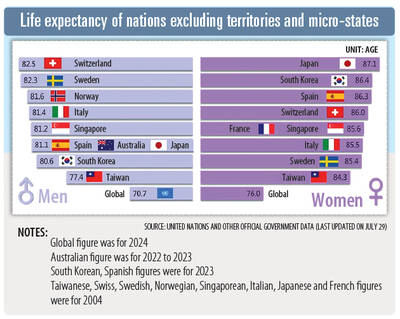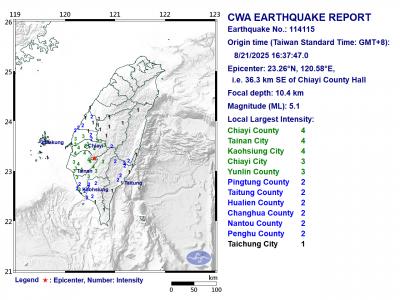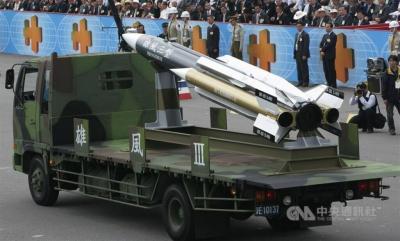Chronic upper back pain might not only be a result of poor posture or injury, but could be caused by chronic gastritis, a clinical gastroenterologist said.
A man in his 40s, surnamed Chang (張), had been experiencing mild upper back pain between his shoulder blades for the past six months, but had not had a back injury and his symptoms did not worsen or improve through stretching, Shu-Tien Clinic gastroenterologist Kang Pen-chu (康本初) said.
Chang did not seek medical attention for the condition, but received a health examination at the clinic, where he was diagnosed with chronic gastritis, Kang said, adding that the man’s upper back pain was actually referred pain caused by the gastritis.
Nerves of the digestive organs partially overlap with those of the upper back, so although the most common symptom of stomach diseases is abdominal pain, they can also trigger pain in the upper back, Kang said.
Some people even perceive the back pain as more severe than the abdominal pain, he added.
“The referred pain from stomach disorders usually occurs in between the shoulder blades in the central or upper back,” he said. “The referred pain of gallbladder disease can occur at the right shoulder, while the referred pain of the pancreas can occur at the center of the back.”
Muscle pain can usually be relieved through rehabilitation, doing stretches or after getting some rest, and the pain might worsen when pressing on certain points of the muscle, Kang said.
However, referred pain does not have these characteristics and might worsen when eating spicy food or drinking coffee or alcoholic beverages, which are more stimulating to the digestive organs, he added.
The main treatment for chronic gastritis is medication and making adjustments to daily habits, including eating a healthier diet with less fat, sugar, sodium and processed food, and avoiding smoking, drinking and stress, Kang said, adding that if chronic upper back pain does not subside after stretching the muscles or resting, people should consider having a health checkup to find other likely causes.

STATS: Taiwan’s average life expectancy of 80.77 years was lower than that of Japan, Singapore and South Korea, but higher than in China, Malaysia and Indonesia Taiwan’s average life expectancy last year increased to 80.77 years, but was still not back to its pre-COVID-19 pandemic peak of 81.32 years in 2020, the Ministry of the Interior said yesterday. The average life expectancy last year increased the 0.54 years from 2023, the ministry said in a statement. For men and women, the average life expectancy last year was 77.42 years and 84.30 years respectively, up 0.48 years and 0.56 years from the previous year. Taiwan’s average life expectancy peaked at 81.32 years in 2020, as the nation was relatively unaffected by the pandemic that year. The metric

Taiwan High Speed Rail Corp. (THSRC) plans to ease strained capacity during peak hours by introducing new fare rules restricting passengers traveling without reserved seats in 2026, company Chairman Shih Che (史哲) said Wednesday. THSRC needs to tackle its capacity issue because there have been several occasions where passengers holding tickets with reserved seats did not make it onto their train in stations packed with individuals traveling without a reserved seat, Shih told reporters in a joint interview in Taipei. Non-reserved seats allow travelers maximum flexibility, but it has led to issues relating to quality of service and safety concerns, especially during

A magnitude 5.1 earthquake struck Chiayi County at 4:37pm today, the Central Weather Administration (CWA) said. The hypocenter was 36.3km southeast of Chiayi County Hall at a depth of 10.4km, CWA data showed. There were no immediate reports of damage resulting from the quake. The intensity of the quake, which gauges the actual effect of a seismic event, measured 4 in Chiayi County, Tainan and Kaohsiung on Taiwan's seven-tier intensity scale, the data showed. The quake had an intensity of 3 in Chiayi City and Yunlin County, while it was measured as 2 in Pingtung, Taitung, Hualien, Changhua, Nantou and Penghu counties, the data

The Supreme Court today rejected an appeal filed by former Air Force officer Shih Chun-cheng (史濬程), convicted of Chinese Communist Party (CCP) espionage, finalizing his sentence at two years and two months for contravening the National Security Act (國家安全法). His other ruling, a ten-month sentence for an additional contravention, was meanwhile overturned and sent to the Taichung branch of the High Court for retrial, the Supreme Court said today. Prosecutors have been notified as Shih is considered a flight risk. Shih was recruited by Chinese Communist Party (CCP) intelligence officials after his retirement in 2008 and appointed as a supervisor